Grey Hair: Its Causes & Interventions – A Scientific Overview
It’s a long-standing belief that grey hair is a consequence of aging. But is this really true?
If so, what’s at the crux of age-related graying? How does this differ from premature gray hair? And can grey hair actually be reversed?
This article dives into the science behind gray hair – its causes, mechanisms, and potential solutions – and then provides evidence-based recommendations for anyone wishing to combat the greying process.
Note: while we’ve seen gray hair reversals in the literature, we don’t yet know how to repeat these results safely. Even still, there are evidence-based actions we can take to help slow, stop, and even reverse premature hair graying. However, these actions are person-specific, and they depend on the causes of premature greying.
Key takeaways
- Gray hair is the result of a loss of pigment-producing cells near the base of a hair follicle. This can occur if (1) the stem cells that make those cells are depleted, or (2) the pigment-producing cells themselves are damaged (and thus can no longer produce pigment). Resultantly, hair will turn from pigmented to white.
- Gray hair is reversible, but if only the stem cells which make pigment-producing cells aren’t destroyed. If these stem cells are depleted or destroyed, reversing gray hair is theoretically much tougher to do.
- There are two main types of graying: age-associated and premature. In both cases, there are reports of accidental (and spontaneous) gray hair reversal following treatments ranging from radiation therapy to lymphoma drugs.
- Premature graying is often linked to hypothyroidism, heavy metal accumulation, drug use, excessive free radicals, and nutritional deficiencies. In these cases, addressing these underlying causes can significantly slow or stop the greying process – and sometimes even reverse it.
- Topical formulations that mimic certain neuroendrocrine hormones are improving both age-related and premature graying. If research continues to progress in this field, we may see FDA-approved treatments for gray hair within the next 5-10 years.
The science behind greying – as well as advice on slowing, stopping, or potentially reversing the process – can be found below.
What is grey hair?
Hair color is regulated by molecules called melanin. Melanin molecules produce pigment. And melanin molecules are made from cells called melanocytes.
Hair color is dictated by both the type of melanin and the quantity of melanocytes. All hair, absent of melanin, is pure white.
As a hair grows, melanocytes located at the base of the hair follicle (i.e., the hair bulb) continuously produce melanin. This meets the pigmentation needs of the hair.
Near the dermal papilla, melanocytes produce melanin to pigment our hair
Grey hair occurs when we lose melanocytes in the hair bulb (Jo et al., 2018). As melanocyte content begins to decrease, less melanin is produced, and the pigmentation of a hair declines.
Eventually, enough melanocytes are loss so that a hair turns from colored to gray.
At the hair bulb, melanocytes make melanin, which creates the pigment of our hair
Fewer melanocytes > less melanin produced > degraded hair pigmentation > whiter hair
Types of greying
There are two common forms of greying: age-related greying, and premature greying.
Age-related graying is genetically inherited. It occurs across all mammals that live long enough. Because of this, age-related greying is considered a normal course of the aging process.
Premature graying is less normal. It’s characterized as significant greying before the age of 35. This can sometimes be inherited, but it’s also often a result of environmental influences – where the loss of hair pigment occurs outside of genetics.
Age-related greying: how does it happen?
No one is really sure. Despite significant research, the question still remains, “Why do melanocytes begin to disappear?”
However, there are a few theories. Each theory involves a specific step-process of how our hair becomes pigmented… and where those step processes can fail.
The step-processes of hair pigmentation
If we were to simplify hair pigmentation into an easy-to-understand process, each step might look something like this.
- Hair follicle stem cells are the “building blocks” of cells that act in concert together to form our hair follicles. At the hair bulb, melanocyte stem cells differentiate into melanocytes – i.e., cells that can produce melanin.
- While a hair is in its growth phase, these melanocytes produce melanin to coat the hair strand with pigment. This process is called melanogenesis.
- This process continues until a hair follicle is finished with its growth phase. Once a hair stops growing, it detaches from the hair bulb, falls out, and the hair follicle degenerates… at which point a new hair follicle will begin to form in its place, and the cycle repeats.
Melanocyte stem cells > melanocytes > melanin > pigmented hair
Knowing this, there are two failure points in this process that can lead to pigment loss (i.e., grey hair).
- Melanocyte stem cells deplete and no longer differentiate into as many melanocytes (leading to less hair pigmentation)
- Melanocytes become damaged and no longer produce as much melanin (leading to less hair pigmentation)
Again, no one is sure why this might happen. But there’s at least one culprit which may explain both failure points.
Free radicals
Free radicals are unstable molecules that exist throughout all tissues of our body. These molecules are missing an electron. Consequently, these free radicals want to “take” the electrons of nearby cells, and in doing so, stabilize themselves.
Unfortunately, as free radicals engage with surrounding tissue cells to “steal” an electron, they destabilize those cell structures and thereby hurt the integrity of the cell. This leads to DNA damage, DNA copying errors, and eventually, aging.
Free radicals are more or less inescapable. They’re generated both from within the body and from external environments – from causes ranging from inflammation to ultraviolet light to pollution to ionizing radiation.
Free radicals: where they come from, and how they damage DNA
In fact, the “free radical theory of aging” suggests that aging is simply due to the accumulation of free radicals. As we get older, free radicals gradually increase to outnumber the molecules that help to neutralize them – antioxidants. The end-result: DNA damage, cell damage, and aging.
Interestingly, there’s evidence that free radical accumulation might be one contributor to grey hair (Tobin et al., 2001). There are at least two potential pathways.
1. Making melanin generates free radicals, which damages melanocytes and turns hair grey
To reiterate: melanocytes make melanin through a process called melanogenesis. This process is energy-dependent. Consequently, as melanocytes make melanin, this process also generates a large production of free radicals.
As free radicals from melanogenesis interact with surrounding cells, they damage the cells creating them in the first place: melanocytes.
Eventually, enough damage to melanocytes accumulates such that fewer melanocytes are produced. This leads to the production of less melanin, and eventually, less hair pigment. The end-result: gray hair.
This sort of disruption is an example of a second-stage failure point in our step process: melanocyte damage.
Melanogenesis > increased free radicals > damaged melanocytes > fewer melanocytes > less melanin > less hair pigment > gray hair
2. Free radicals can damage melanocyte stem cells, thus reducing the number of melanocytes at the hair bulb
This event is an example of a first-stage failure point, and it leads to melanocyte stem cell dysfunction (Jo et al., 2018).
Again, during the regenerative stage of the hair cycle, melanocyte stem cells differentiate into melanocytes. These are melanin-producing cells. This differentiation process supplies enough melanocyte cells to coat a growing hair with pigment.
If melanocyte stem cells cannot self-renew or differentiate, then fewer melanocytes are made, less melanin is produced, and our hair loses its pigment and turns grey.
Free radicals have been found to also damage melanocyte stem cells and, in doing so, impair their ability to create melanocyte cells. In mice, DNA damage results in melanocyte stem cell depletion and failure to self-renew (Jo et al., 2018). That means that free radical generation might be involved in both first-stage and second-stage failure points in age-associated greying hair.
Free radical accumulation > melanocyte stem cell damage > melanocyte stem cell dysregulation > fewer melanocytes> less melanin > grey hair
What determines our “reservoir” of melanocyte stem cells?
Evidence strongly implicates our genes.
In fact, our genetic constitution may determine just how many melanocyte stem cells we have to resupply a hair with pigment at each hair cycle. And interestingly, the number of melanocyte stem cells are likely not infinite.
This means that age-related greying might have a predetermined clock, and this clock might be based entirely on how many times melanocytes must divide, differentiate, and produce melanin to re-pigment a newly growing hair.
Does this mean that gray hair is a consequence of growing hair?
Potentially. In fact, some research teams have actually proposed this very idea – that active hair growth is what makes our hair turn grey (Jo et al., 2018). It all just depends on how we view this “natural” process of free radical production and its consequences.
Again, melanogenesis is an energy-dependent process. A byproduct of this process is free radical production.
Melanogenesis doesn’t occur when a hair isn’t growing. This makes sense, because when a hair strand isn’t growing, there are no new regions of that hair requiring pigmentation.
That means that the act of “growing” a hair leads to melanogenesis, which causes excess free radical production, which increases the potential for DNA damage, and thus potentiates the loss of melanocyte stem cells, melanocytes, and thereby melanin. The end-result: grayer hair.
Are there built-in mechanisms to protect against free radical damage?
Yes. There are ways our bodies can combat free radicals. They’re called antioxidants.
Antioxidants are molecules with an extra electron to “donate” to free radicals. The sooner an antioxidant comes into contact with a free radical, the sooner it can donate its electron to neutralize that free radical, and the less damage that free radical can do to cells and supportive tissues.
Endogenous and exogenous antioxidants help neutralize free radicals in the body
Antioxidants are made from within the body (endogenous) and acquired from outside the body (exogenous).
For instance, we get antioxidants like vitamin E from the foods we eat. But we also produce endogenous antioxidant enzymes – like glutathione and superoxide dismutase. Regardless of how we acquire them, antioxidants help to combat the generation of free radicals from energy-dependent processes in the body.
In general, the body tightly regulates its production of antioxidants to always remain balanced. If we eat more antioxidants, endogenous antioxidant production goes down. If we eat less antioxidants, the body produces more antioxidants internally.
Thus, another take on age-related greying due to free radicals isn’t necessarily that our bodies produce too many free radicals… it’s that they stop producing enough antioxidants to fight all of them.
Fewer antioxidants > more oxidative stress (free radical damage) > damaged melanocyte stem cells / melanocytes > less melanin produced > less hair pigment > greying hair
Is free radical accumulation really to blame for greying?
Yes and no.
Theoretically, free radical damage will slowly deplete melanocyte stem cells and damage melanocytes. Over time, hair will lose pigment and eventually turn grey.
At the same time, if you’re dealing with gray hair, you know that greying doesn’t just happen slowly. In fact, graying happens pretty rapidly – and usually within the same growth phase of a previously pigmented hair.
For reference, I found a (new) grey hair this morning. I plucked it out, examined it, and realized it had turned from black to grey almost instantaneously – as evidenced by a brown hair that suddenly lost its pigment midway down the hair strand.
This all suggests that graying might happen as a single step-process – that a hair will lose pigment rapidly rather than slowly over time. This goes against the idea that greying accumulates due to the slow loss of melanin. Rather, it implies that greying is triggered all at once.
This continues to puzzle scientists, and thus research into the exact process of greying is still ongoing.
Age-associated graying: steps toward slowing or stopping it
Right now, research on reversing age-associated grey hair seems to focus primarily on (1) decreasing free radical activity in the hair bulb, and (2) increasing antioxidant activity at the hair bulb. Whether this is an effective is still to be determined.
There are plenty of ways to reduce free radical generation in the body. After all, free radicals are a consequence of both internal and external forces, some of the major ones being:
- Inflammation (local and systemic)
- Stress
- Smoking
- Obesity
- Air pollution
- Heavy metal toxicity
- Chronic toxin exposure
- Poor diet
- Mold toxicity
Ironically, chronic exposure to elevated free radicals may also deplete endogenous antioxidant activity. In theory, this would then accelerate the aging process, causing signs of aging – like graying – to appear earlier.
That means the first line of defense for age-related greying is to (1) reduce any unnecessary free radical activity, and (2) increase endogenous and exogenous antioxidant levels – mainly through a diet that is nutrient replete, avoidant of inflammatory foods, and avoidant of a calorie deficit.
As we’ve learned in the book, this sort of diet will vary for everyone.
What about reversing age-related greying?
Interestingly, there have been case reports of partial improvements to age-related greying. In some cases, age-associated greying has spontaneously reversed in a single hair follicle (Paus, 2001).
Spontaneous, unexplainable reversal of grey hair (in the same hair cycle)
Paradoxically, partial hair regimentation has been observed after radiation therapies for cancer – i.e., after the body has been bombarded with oxidative stress and free radicals.
Theoretically, radiation treatments can temporarily stimulate the production of endogenous antioxidants. This is in response to the free radical increase, and is a means to mitigate stress and maintain a balance between oxidants and antioxidants in tissues. For some reason, this increased antioxidant activity also sometimes leads to hair repigmentation. But we don’t yet know exactly why.
In any case, we haven’t found a way to consistently repigment hair following radiation therapy. And in all reality, it doesn’t make sense to seek radiation therapy to reverse age-associated greying.
But this does beg the question: is it possible to potentially reverse grey hair due to aging?
Theoretically, yes. At least partially. But there are limitations.
The challenges of reversing age-related graying
To understand why this is so challenging, we need to look no further than the two potential failure points in age-related greying.
- Depletion of melanocyte stem cells
- Damage to the melanocytes themselves
If there’s only damage to the melanocytes (via free radical accumulation or other sources), then theoretically, if we resolve the cause of that damage, then melanocyte stem cells will eventually differentiate into healthy melanocytes and the hair will return to pigmented.
However, if the melanocyte stem cells are damaged or depleted, the reversal of grey hair becomes much harder. This is because there are a finite number of stem cells in the body, and if damage occurs this early into the step-process, we lose the ability to produce healthy melanocytes, and thereby melanin (hair pigment).
This is why some elderly men and women have reported improvements to greying hair – even with something as simple juicing or adding in fruit smoothies to their daily routines.
These foods are packed with antioxidants. Subsequently, ingesting them may increase antioxidant activity in the hair bulb, which would repair melanocyte damage and thereby lead to some improvements to greying.
Having said that, once the melanocyte stem cell reservoirs become depleted, it doesn’t matter how many antioxidants we load up on. We won’t be able to produce melanin-forming cells, and so our hair won’t retain pigment. This is also likely why these elderly men and women upping antioxidant intake only see marginal improvements to their hair color – because we don’t yet know how to tackle this step process.
Note: Interestingly, in androgenic alopecia, hair follicle stem cells aren’t depleted… they just have a hard time differentiating into other cell types. This is what makes this condition theoretically much more reversible.
Technically, age-related graying is reversible so long as there hasn’t been significant damage or depletion of melanocyte stem cells. If this has occurred, reversing age-related greying becomes much harder.
Even still, there are several cases of age-related gray hair partially reversing, possibly by increasing antioxidant activity and decreasing free radical activity. We’ve seen this in case studies in elderly men and women juicing.
Paradoxically, we’ve also seen it following radiation exposure… where a massive spike in free radicals stimulates a significant increase in endogenous antioxidant activity – leading to the spontaneous, unexplainable return on pigment to hair.
Premature graying: what are the causes?
Like age-related graying, premature greying is believed to be the result of (1) accumulated damage from free radicals, and (2) a gradual loss in antioxidants protecting the hair bulge. However, just like age-related greying, whether or not this is actually at the crux of premature greying is still up for debate.
In any case, there seem to be several underlying conditions that accelerate the greying process, leading to the premature loss of hair pigmentation (i.e., before the age of 35). Here are a few of the bigger culprits (note: this list is not exhaustive).
Hypothyroidism
Thyroid hormones are known to play a significant role in the maintenance of the hair follicle, and may even help to regulate melanocyte activity and hair pigmentation.
For instance, people with hypothyroidism or thyroid hormone deficiencies tend to present more often with graying hair versus controls (McDonough et al., 2012).
Interestingly, there have also been two case studies of hair repigmentation in men following the administration of thyroid hormone (specifically, T3). In fact, these case reports prompted researchers to conduct animal and cell culture studies to assess the effects of thyroid hormones on follicular melanocytes (Redondo et al., 2007).
The results: that in mice, T3 (a thyroid hormone) stimulates early entry into the anagen phase of the hair cycle – the growth phase where melanin production is active (as opposed to telogen or catagen when no melanin is produced). And in human cell cultures, the application of thyroid hormones T3 and T4 significantly enhanced melanin synthesis in the hair follicle (Beek et al., 2008).
That’s encouraging news for anyone with early graying and an under-active thyroid. But before we get too excited, there are still a few questions that need answering.
- Do thyroid hormones enhance the production of melanin when the thyroid is in a normal state? Or, will thyroid hormones only restore hair pigment for those with hypothyroidism?
- Does thyroid hormone also stimulate hair repigmentation in women? Right now, the research is primarily focused on mice and men.
Future studies may fill these gaps.
Nutrient deficiencies
There is no doubt that vitamins and minerals play a significant role in hair growth and pigmentation. This has led researchers to investigate a possible association with premature graying.
One analysis of premature graying subjects suggests a link between low copper levels and the graying of hair (Fatemi Naieni et al., 2011). Compared to controls, those with gray hair had lower serum copper concentrations.
While this doesn’t demonstrate causality, the copper-graying connection is very well plausible. Here’s why.
A critical enzyme in melanin synthesis, tyrosinase, requires a copper ion. So, a deficiency in copper could theoretically lead to the insufficiency of this important step in hair pigmentation.
Other trace mineral deficiencies have also been investigated. For instance, one research team found low serum iron and low serum calcium in premature graying high school and pre-university students versus normal controls (Bhat et al., 2013).
Interestingly, there’s also a case report of hair repigmentation with iron supplementation in iron deficiency anemia (Choi et al, 2016). This may be due to iron’s role in aspects of melanin production – though nobody’s really sure yet how to explain this.
Additionally, of the patients included in Bhat’s 2013 study, 45.7% were deficient in vitamin D3 (<10 ng/ml) and 54.3% were insufficient (10-30 ng/ml), suggesting an additional link to deficiency.
Although it hasn’t been directly examined in the hair follicle, vitamin D3 is known to regulate the gene expression that codes for tyrosine hydroxylase expression, a key enzyme in melanogenesis (Cui et al., 2015). Essentially, without vitamin D3, tyrosine hydroxylase activity may be impaired.
Vitamin B12 deficiency has also been documented as being connected to premature graying, however, why this occurs is still unknown (McDonough et al., 2012).
Whether sufficient levels of these specific nutrients is enough to prevent premature graying is unknown. However, restoring normal levels of these vitamins in a case of deficiency may reverse deficiency-related graying.
Drugs
Some drugs can also lead to loss of hair pigment. Graying has been described with drugs like:
- Pazopanib
- Sunitinib
- Dasatinib
- Hydroxychloroquine
If you experience graying associated with any of these drugs, notify your doctor to identify a possible solution.
Excessive free radical activity
The same free radical theory of aging may also explain premature graying. It all depends on the dose of free radicals you’re exogenously exposed to (in other words, the accumulation of free radicals from external forces).
If you’re living in a polluted environment, smoking cigarettes regularly, eating a diet absent of essential nutrients, and are overweight – you’re exposing yourself to significantly more free radical activity. Theoretically, this potentially elevates your risk for early graying.
At the same time, there are significant holes in the “free radical” theory of greying. After all, radiation exposure exponentiates free radical activity, and paradoxically, has led to partial reversals in graying.
Premature graying is often the result of at least one of the following: (1) hypothyroidism, (2) nutrient deficiencies, (3) heavy metal toxicities, (4) certain drugs, or (5) excessive free radical activity.
If you have early graying, then identifying your potential causes and seeking treatment (with the help of a medical professional) may slow, stop, or even reverse the graying process. But success here depends entirely on the causes of your greying, and how much damage/depletion has occurred to hair follicle melanocyte stem cells.
Revisiting the question: can grey hair be reversed? Maybe.
To reiterate from earlier, our answer was yes – at least partially… and only if hair follicle melanocyte stem cells aren’t damaged or depleted.
At the same time, there have been some incredible grey hair reversals – most of them by accident, and as a side effect of drugs.
Perhaps the most impressive gray hair reversals have been through the administration of thyroid hormone or brentuximab (a drug designed to treat lymphomas) in men. And on that note, see these photos of a man on brentuximab, and his hair before and after treatment (Penzi et al., 2017).
Gray hair reversal (8 months) following brentuximab treatment
Again, whether these drugs are actually reversing age-related graying is unclear. My guess is that this sort of graying is probably more attributable to premature graying – and linked to the underlying condition in which doctors are treating. But, in any case, these sort of reversals are fascinating.
Accidental gray hair reversal: elevated adrenocorticotropic hormone
Dr. Paus, in his review on hair follicle pigmentation, included a story of a man who developed elevated adrenocorticotropic hormone (ACTH) levels. Interestingly, he also unexplainably experienced skin darkening and the reversal of his gray hair (Paus, 2011).
ACTH is a hormone secreted by the pituitary gland, and as such, this case study suggests a possible avenue for neuroendocrine modulation in the reversal of graying. Interestingly, Paus also hypothesized the role of other neuroendocrine hormones in the prevention of hair graying, including melatonin, β-endorphin, and α-melanocyte stimulating hormone (α-MSH).
However, research here is still ongoing.
The future of treatments
There is currently no approved treatment for graying hair, whether age-related or premature. However, there are some preliminary treatments being investigated.
One intriguing treatment in is palmitoyl tetrapeptide-20, a peptide that mimics α-MSH – one of the hormones theorized by Paus to regulate the graying process (Almeida Scalvino et al., 2018).
Clinical trials using a topical formulation of this peptide showed that it significantly increased melanin synthesis. Consequently, it also improved gray hair in subjects! This may provide a simple, effective way to prevent and reverse graying.
The bottom line
- Hair pigmentation requires melanin synthesis by melanocytes. Melanocytes are cyclically replenished each hair cycle by melanocyte stem cells.
- Graying hair is simply a transition from pigmented to unpigmented (or dark to white), caused by a progressive loss of melanocytes at the hair bulb.
- While melanocyte stem cells may have a genetically predetermined clock before they deplete, research shows that (1) increased free radical accumulation and (2) decreased antioxidant activity might accelerate this process.
- Repigmentation of hair has been observed following thyroid hormone administration in men.
- Copper, iron, vitamin D3, and vitamin B12 deficiencies may lead to premature graying.
- There is documentation of gray hair reversal associated with thyroid hormones, lymphoma treatment, and elevated ACTH levels.
- There is currently no consensus on the treatment or prevention of graying hair. New therapies, like a biomimetic α-MSH peptide, may be effective for preventing and reversing gray hair, at least according to a limited number of clinical trials.
- Mitigating excess free radical production may prevent both age-associated and premature aging related to oxidative damage to melanocyte stem cells and melanocytes.
- If premature graying is suspected, vitamin deficiencies and thyroid conditions can be identified through lab testing and treated under the guidance of a licensed physician. Possible drug side effects should also be considered.

Rob English is a researcher, medical editor, and the founder of perfecthairhealth.com. He acts as a peer reviewer for scholarly journals and has published five peer-reviewed papers on androgenic alopecia. He writes regularly about the science behind hair loss (and hair growth). Feel free to browse his long-form articles and publications throughout this site.

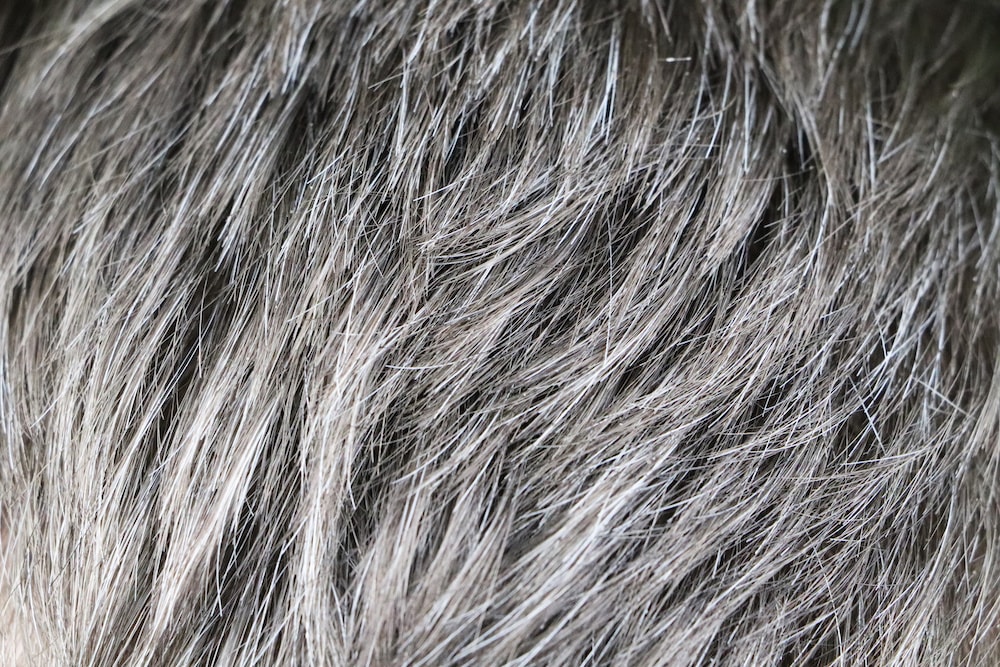
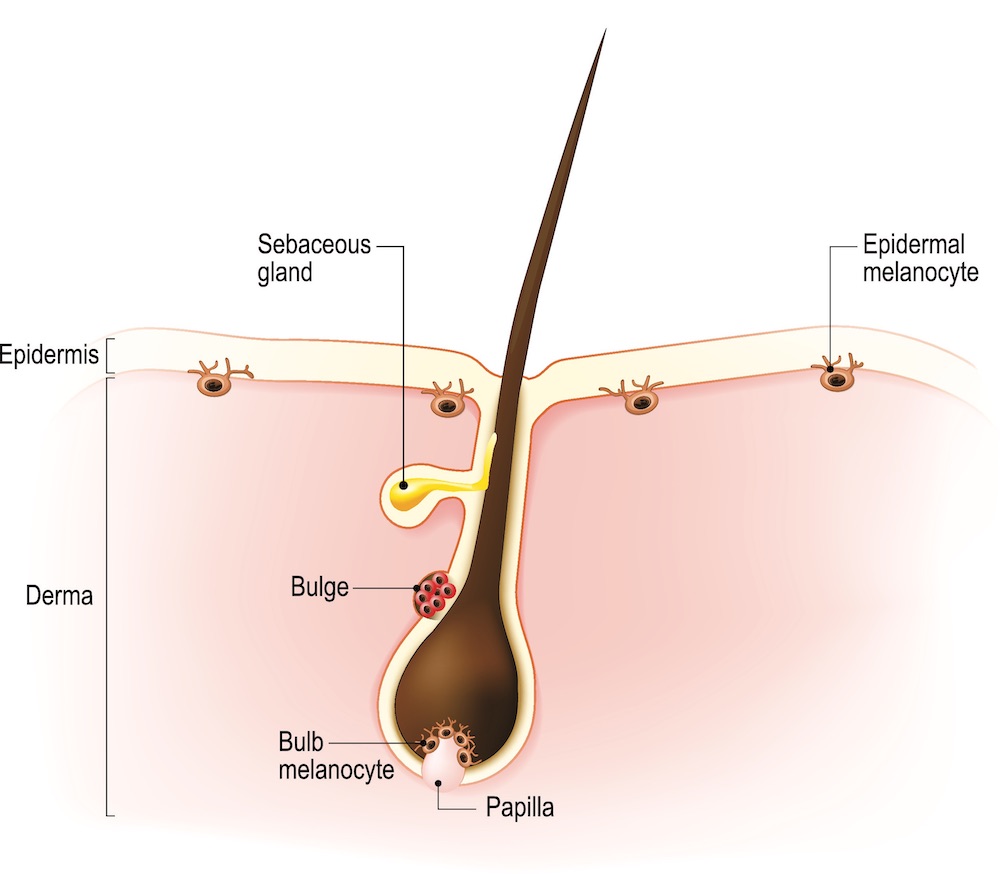
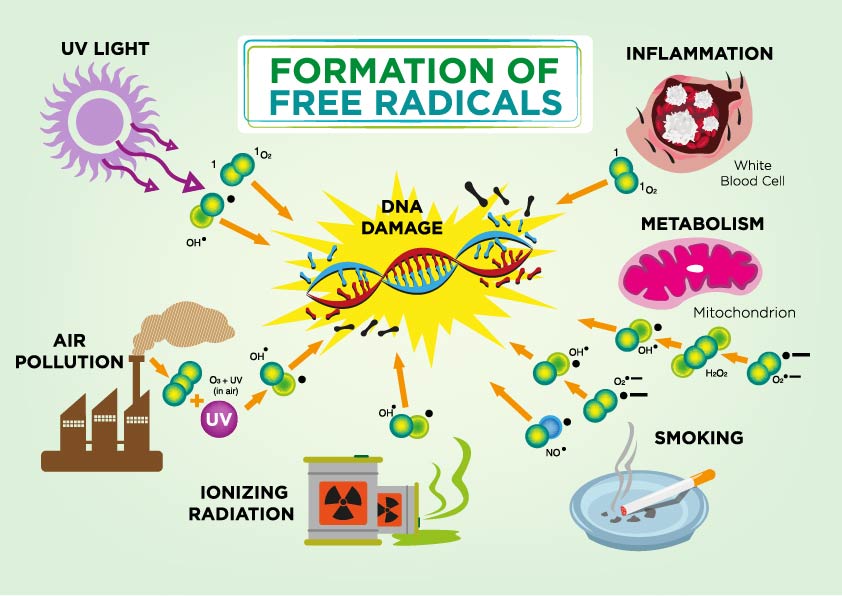
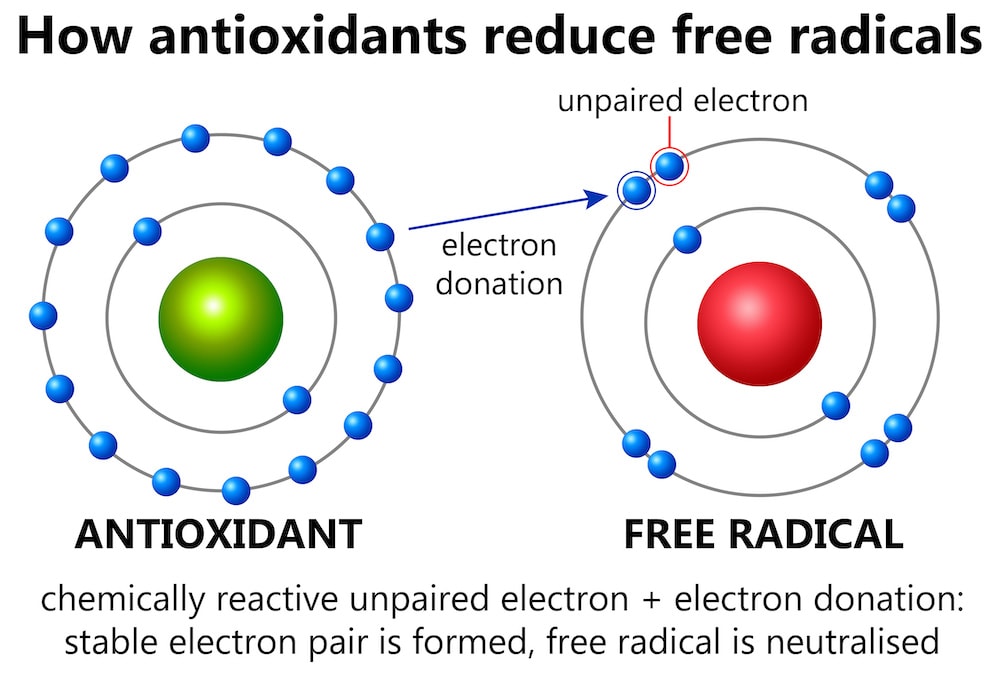
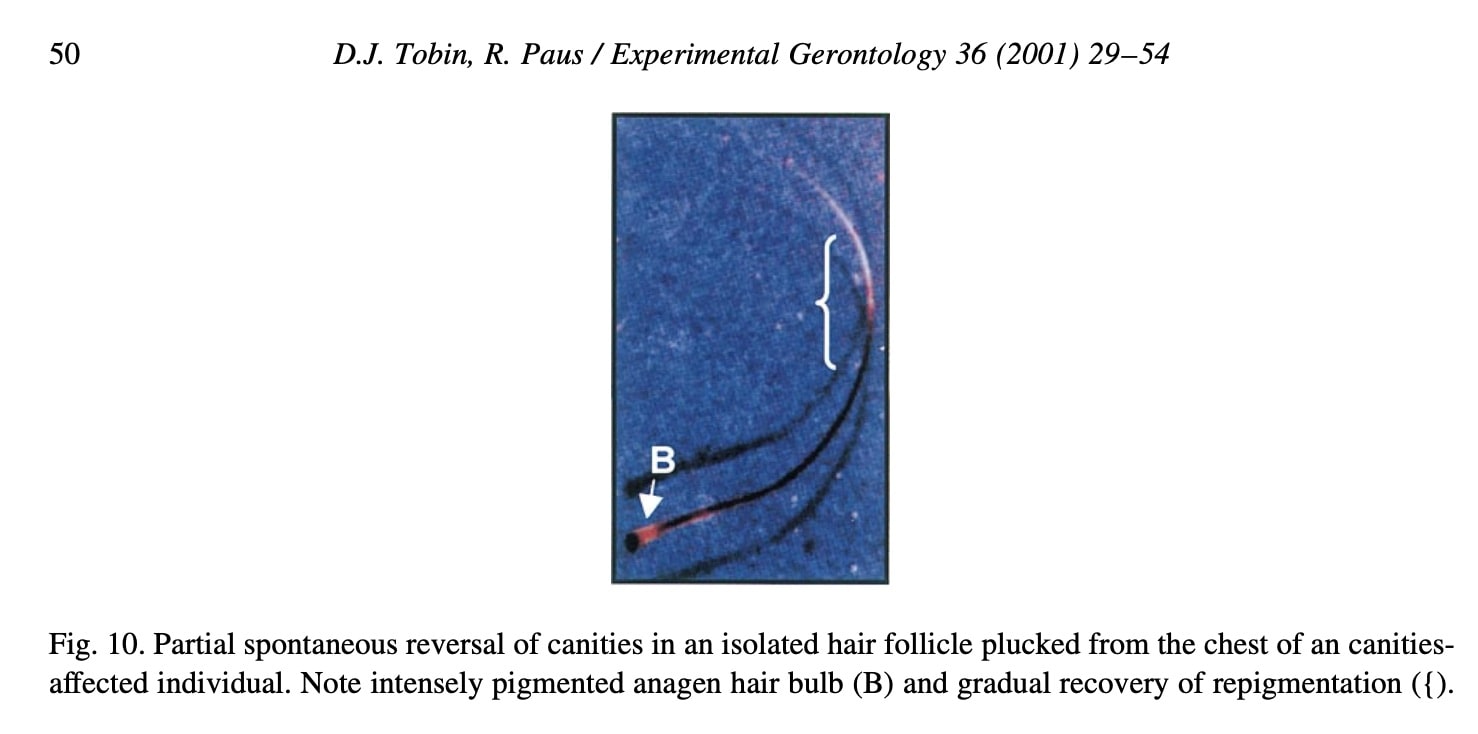
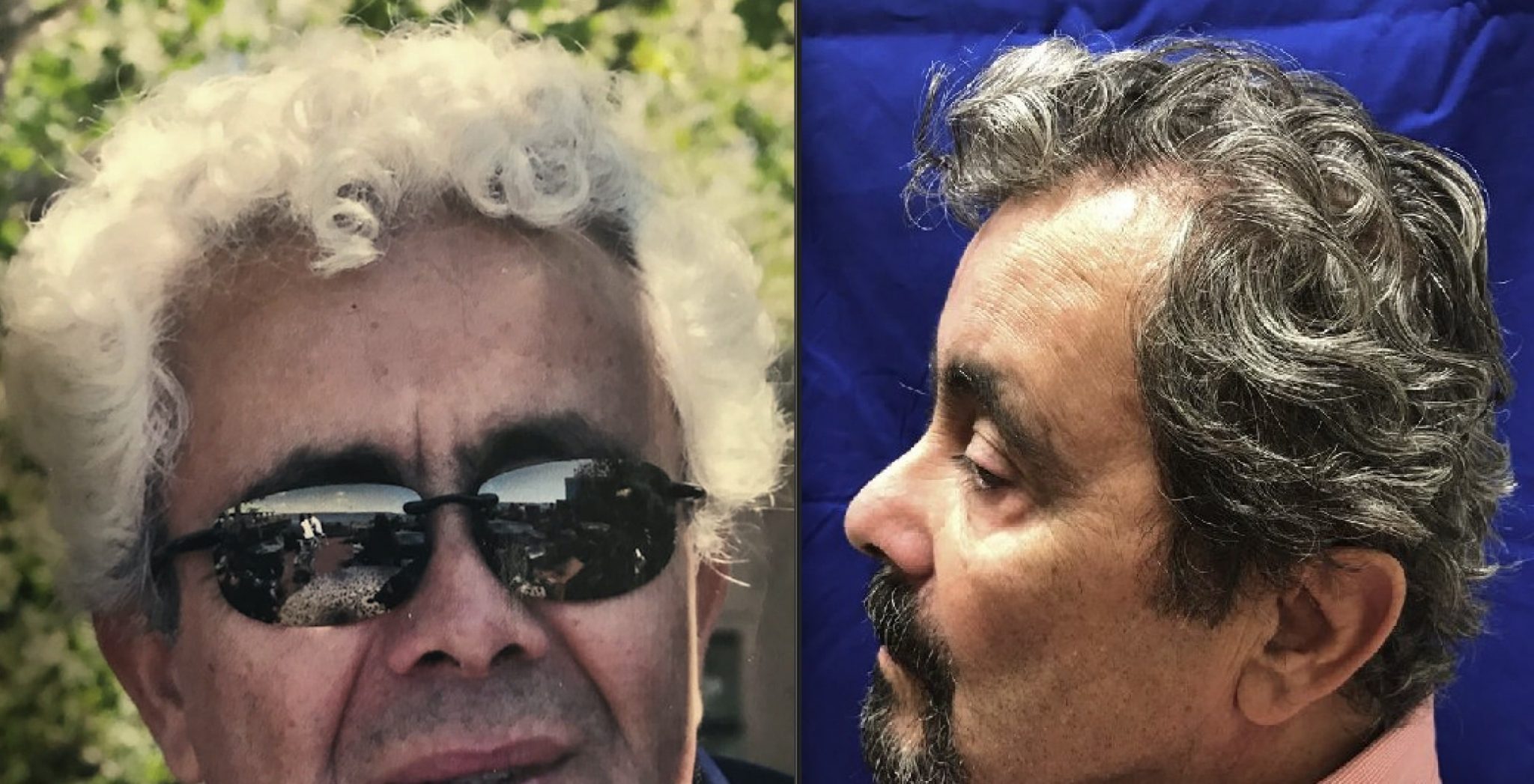

Hey there Rob. Cool article.
I’m not sure of why but grey hair has a different feel to it.
Fir me it’s not as straight as my regular hair and just not as nice in texture.
Facial hair that is grey is much softer and harder to shave off with electric shaver as they simply bend under pressure.
I think the pigment does something to the hair other than just colour or other things are happening to make grey hair different.
Hey Rob,
There might be an another way by which melanocyte stem cells may get depleted and that is by hyperactivation of sympathetic nervous system(continous stress or being in a continous flight-and-flight mode) .
https://www.nature.com/articles/s41586-020-1935-3
Title – ” Hyperactivation of sympathetic nerves drives depletion of melanocyte stem cells ”
Key Point – “Hair greying results from activation of the sympathetic nerves that innervate the melanocyte stem-cell niche. Under conditions of stress, the activation of these sympathetic nerves leads to burst release of the neurotransmitter noradrenaline (also known as norepinephrine). This causes quiescent melanocyte stem cells to proliferate rapidly, and is followed by their differentiation, migration and permanent depletion from the niche”
Hey Dante,
It’s great to hear from you. And thanks for sharing that study – very interesting stuff. For anyone interested: the investigation team stressed mice through one of three ways: short-term pain, restricted movement, and psychological stress. All three stressors led to faster depletion of melanocyte stem cells. The team then tested the mechanisms behind why this might be happening, specifically: a compromised immune system, the hormone corticosterone, and the hormone noradrenaline. Stressing mice with compromised immune systems and more corticosterone did not lead to faster graying rates; however, stressing mice injected with noradrenaline did – and demonstrated rapid depletion of melanocyte stem cells. So, it looks like we’re one step closer to understanding this process (and potentially how to tackle it).
Thanks a ton for sharing!
All my best,
Rob
Hi Rob,
Massages work. I’v been able to regrow hair on areas bald since I’m 18 (I’m 33).
You don’t enough get recongnized as the absolue hero you are.
That said, there is still à thing I fins really perplexing about scalp tension theory:temple peaks.
Those small bits of hair framing thé face are affected by MPB, though thé skin underneath is regular, loose face skin (for me anyway, maybe I’m special, I Nevers poked other dudes head to verify).
I’m really curious if you had an explaination about that.
Also, I’m currently too broke to buy your method, so maybe you talk about it: brushing my scalp very hard with a plastic brush (and I added Lllt directly afterwards, but mainly the brushing) has been a réal game changer for me.
Maybe because of that, I’m on my way to be part of the luckies able to regrow litteraly 100% of my preteen hair
Sorry about typos, I’m on my Phone and autocorrect is in French
Hi Valentin
How long and how hard do you brush your scalp?
Thanks
James